James "Jim" Brown spent 14 years of his career drilling in the international oil fields in Iran, Sumatra, and Burma (modern Myanmar) and in that time, he certainly experienced the adventure and danger for which the International Drillers were known.
Like most of the International Drillers, Jim Brown began his career in the oil industry as a young boy in Lambton County working in the oil fields. By age 23, his sense of adventure prompted him to sign a contract with the Anglo-Persian Oil Company during the First World War which, at the time, was drilling for oil in Iran to supply the British Royal Navy. This experience would soon put his ingenuity to the test. The drilling rigs were scattered across the plain for miles into the distance and as Brown surveyed the land from his own rig, he noticed that those in the far distance were going up in flame, one by one. An army of Germans allied with local Arab tribes were making their way across the plain, destroying British drilling rigs and killing all those they encountered. Brown quickly realised the severity of the situation and urged his crew to follow him to shelter in the nearby mountains, knowing that to stay would mean death. For four months, the group hid in the mountains surviving on birds and other animals they scavenged and ate raw for fear that a fire would give away their position. Meanwhile, the other crews had not survived the raid and the Anglo-Persian Oil Company assumed that they were dead as well. The group eventually worked their way back to an allied settlement, much to everyone's surprise.
Brown returned to Canada after the war, accompanied by an English bride, and worked for Imperial Oil Ltd. in Sarnia. The call of the wild was strong and Brown eventually returned to work in the international oil fields, this time in South East Asia. He brought his wife along with him and had two children in Sumatra and two more in Borneo. It was there, in 1922, that Brown was involved in building what was the largest undersea oil line in the world at the time. The pipeline was constructed piece by piece, extending from the shore seven miles into the jungle. Once it was completed, two steamers pulled the pipeline into place off the island where it would be used to supply ships which could not approach the island due to the reef.
The Brown family lived a comfortable life in South East Asia. The women were carried to the drilling camps in litters by locals; they ate some of the best food the land could offer, and participated in a host of dances, birthday parties, and Christmas pageants. There were some difficulties to overcome. It is said that Ada, Jim Brown's wife, drank a bottle of whiskey a day because the water was unsafe to drink. Finally in 1932, the Brown family returned to Canada. Their children were growing up and they felt that they should return home, and they began to feel the local unrest as the Japanese empire began its expansion. But they would return to a home full of Persian rugs, Arab swords, and other worldly trinkets.



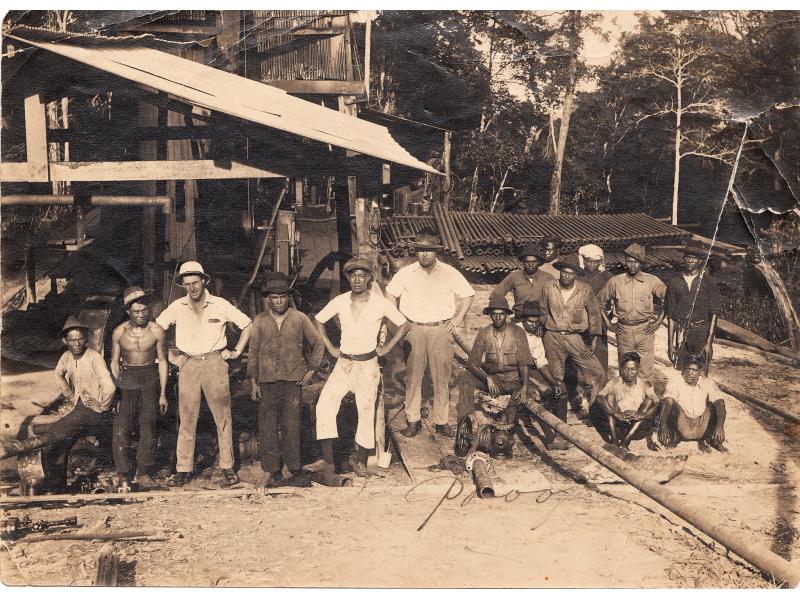 Jim Brown (center) with his drilling crew in Borneo.
Jim Brown (center) with his drilling crew in Borneo. 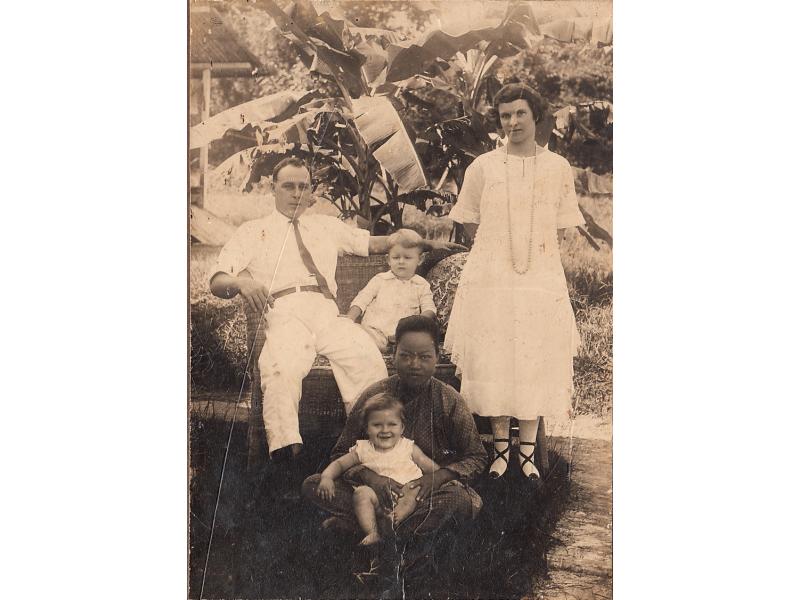 James and Ada Brown with their sons James and Edward being held by a servant in Sumatra, ca. 1922.
James and Ada Brown with their sons James and Edward being held by a servant in Sumatra, ca. 1922. 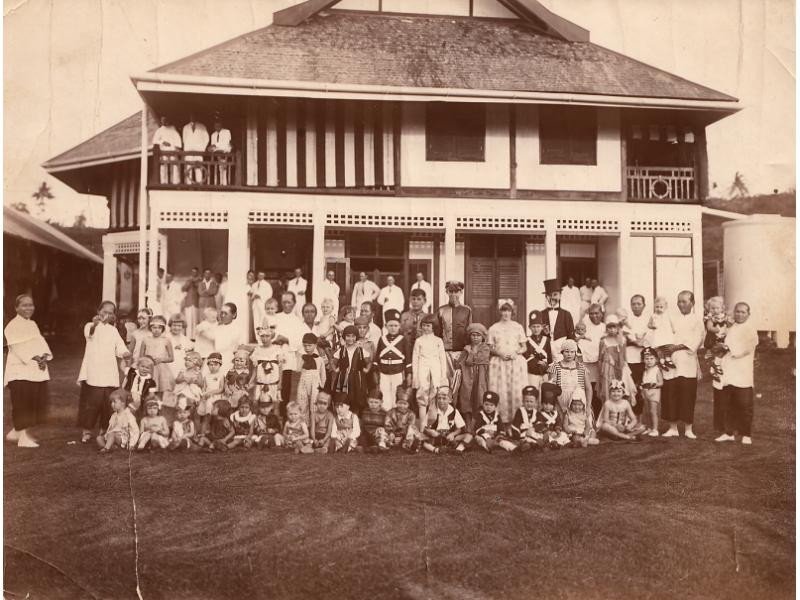 Children of the International Drillers dressed for a Christmas concert in Miri, Borneo, in 1929.
Children of the International Drillers dressed for a Christmas concert in Miri, Borneo, in 1929.  Tea or birthday party in Borneo in the 1920s. Ada Brown is sitting on the arm of a chair (right).
Tea or birthday party in Borneo in the 1920s. Ada Brown is sitting on the arm of a chair (right). 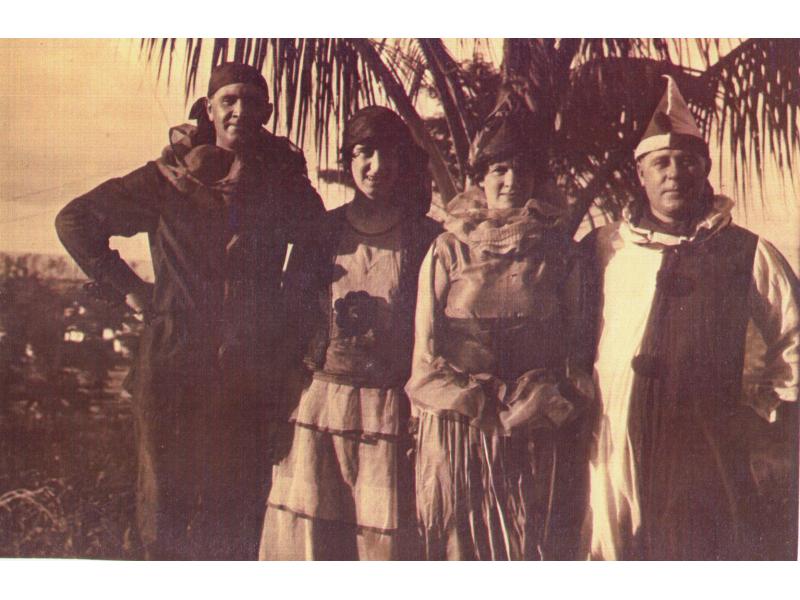 James and Ada Brown (right) and Mr. and Mrs. Robertson on their way to a masquerade party.
James and Ada Brown (right) and Mr. and Mrs. Robertson on their way to a masquerade party. 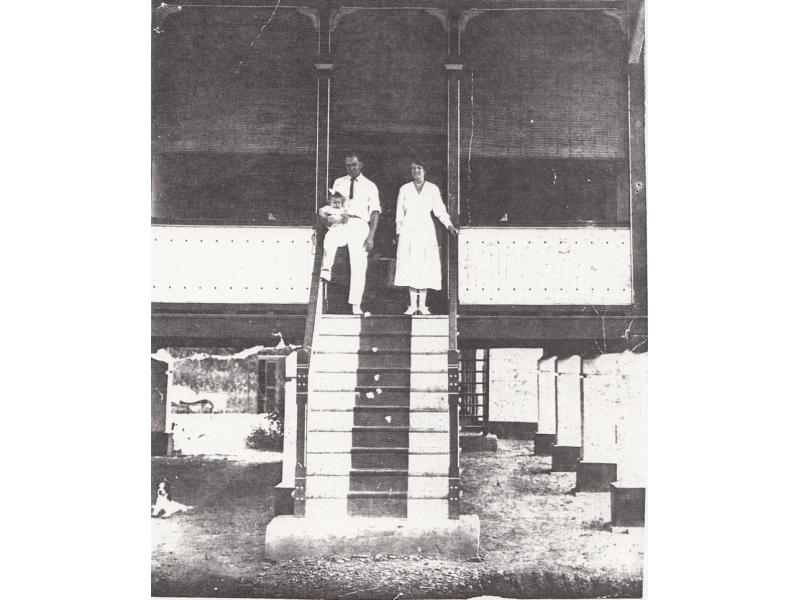 James Brown Sr., holding James Jr, and Ada Brown at their house in Sumatra in 1921. Note that the house is on stilts to protect it from animals.
James Brown Sr., holding James Jr, and Ada Brown at their house in Sumatra in 1921. Note that the house is on stilts to protect it from animals.  James Brown and another International Driller in Hong Kong.
James Brown and another International Driller in Hong Kong. 




Add new comment